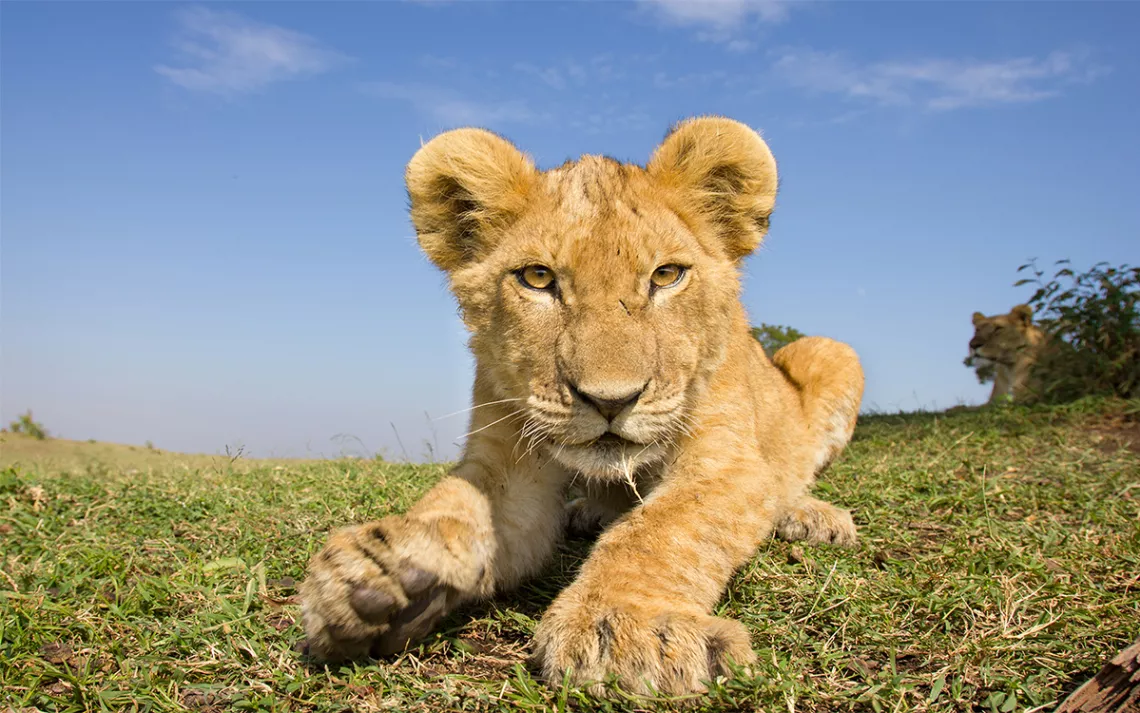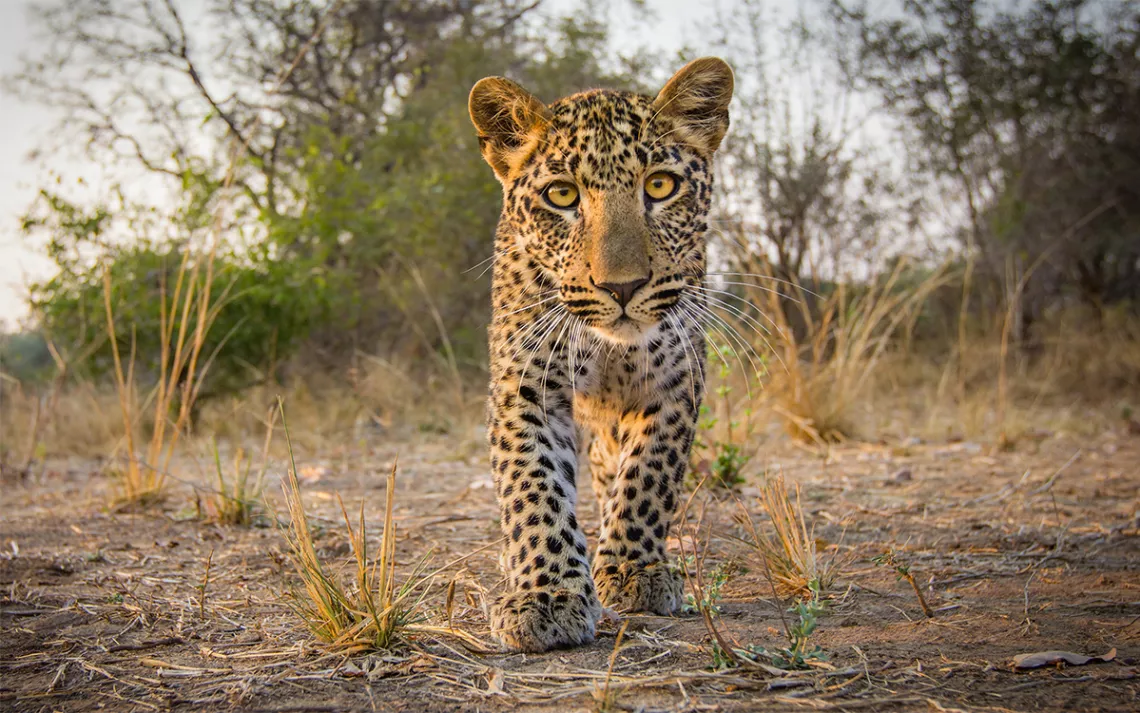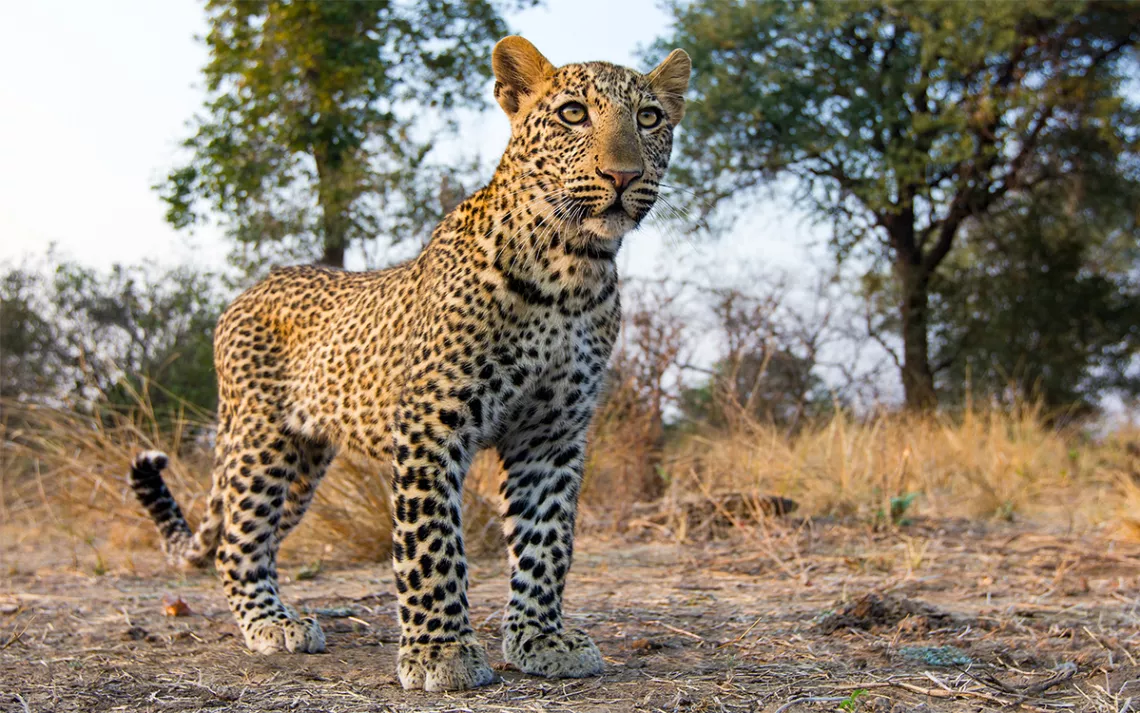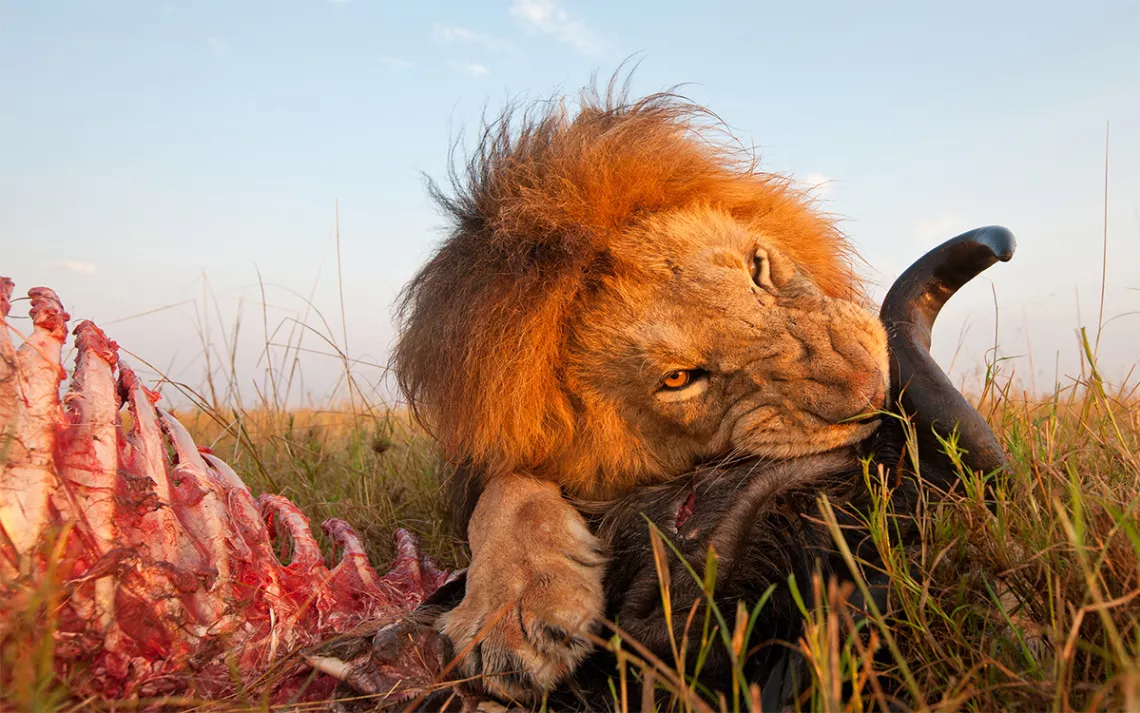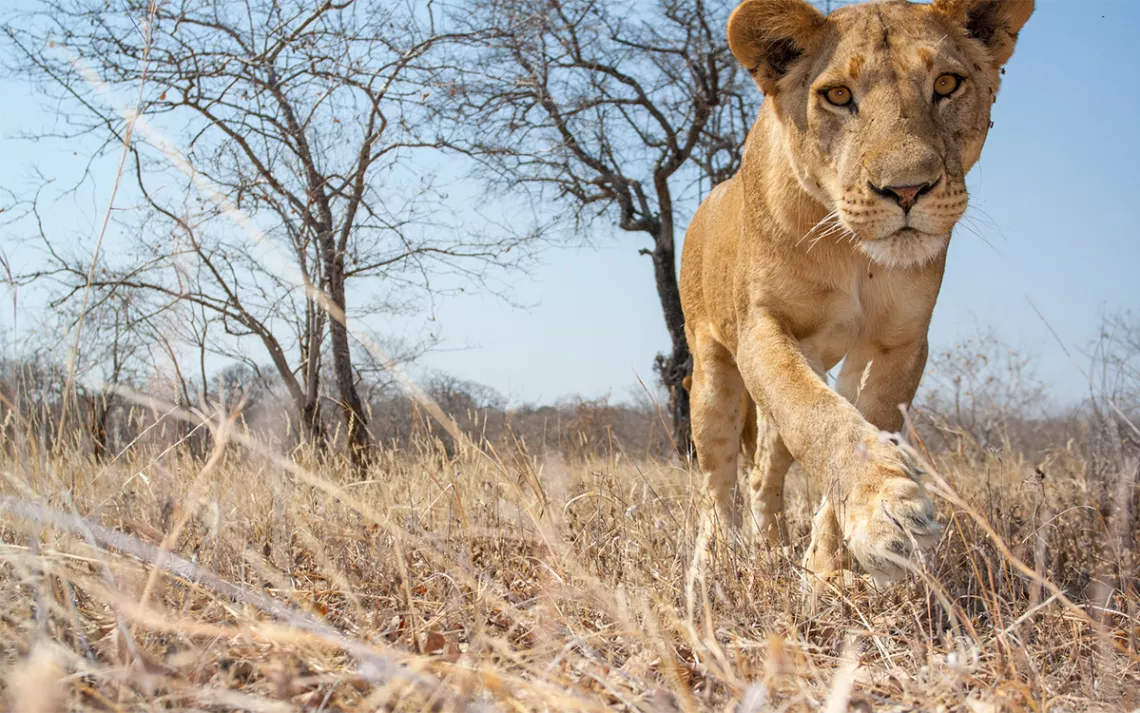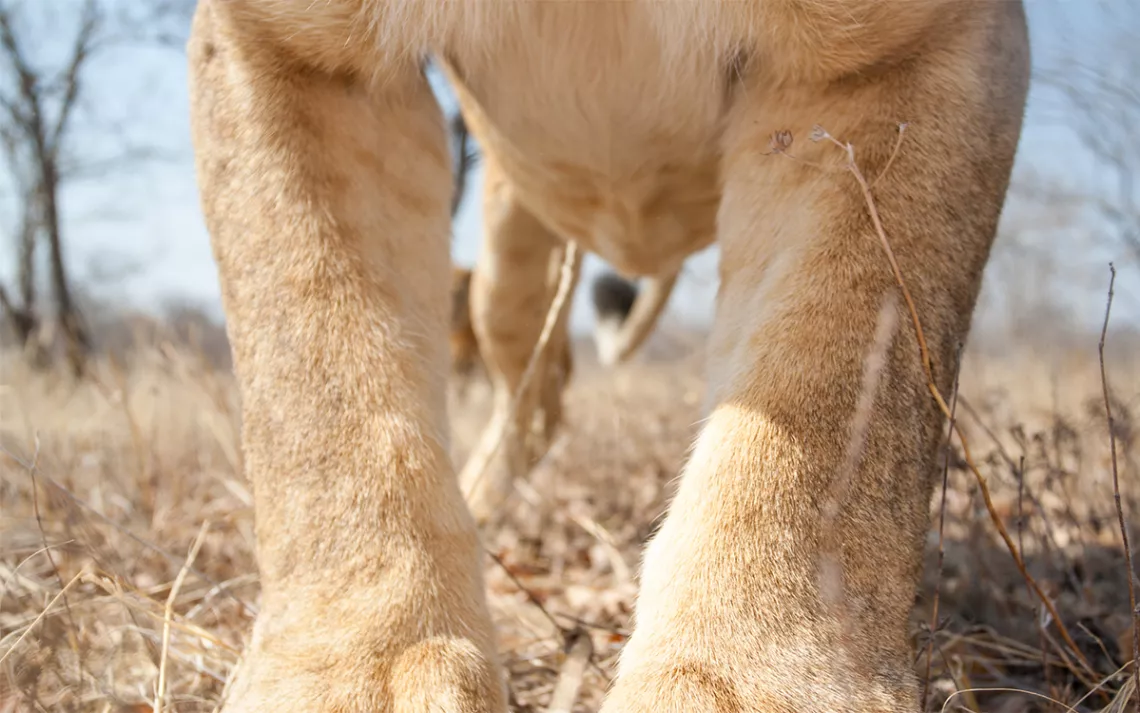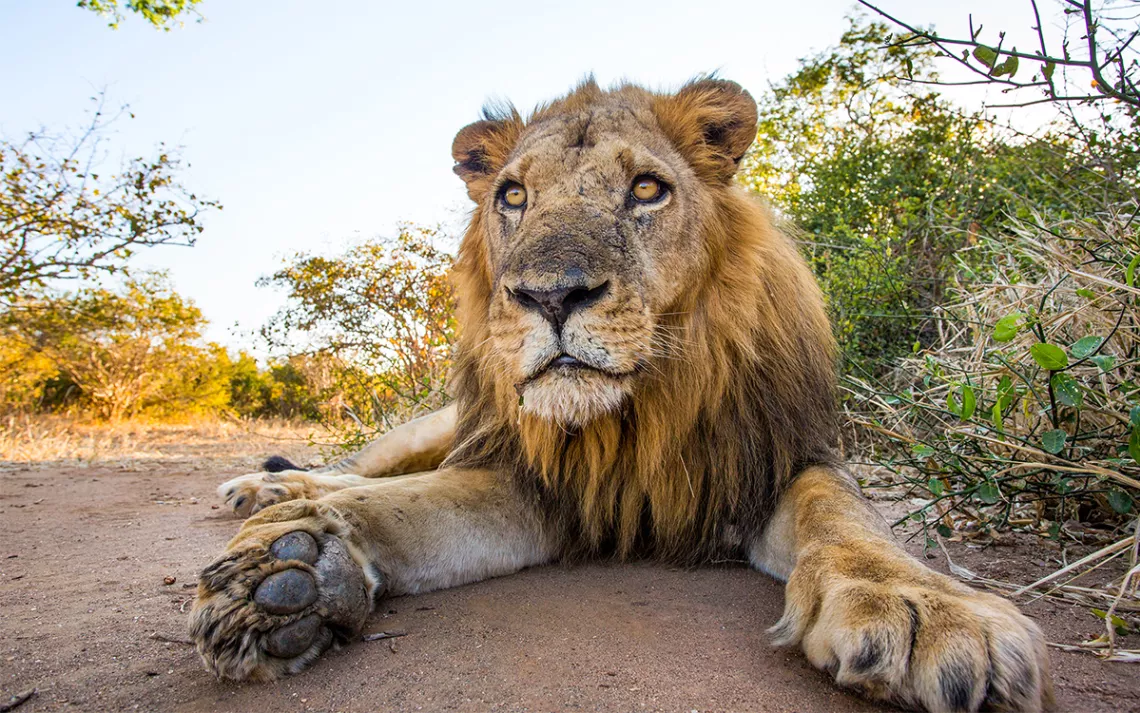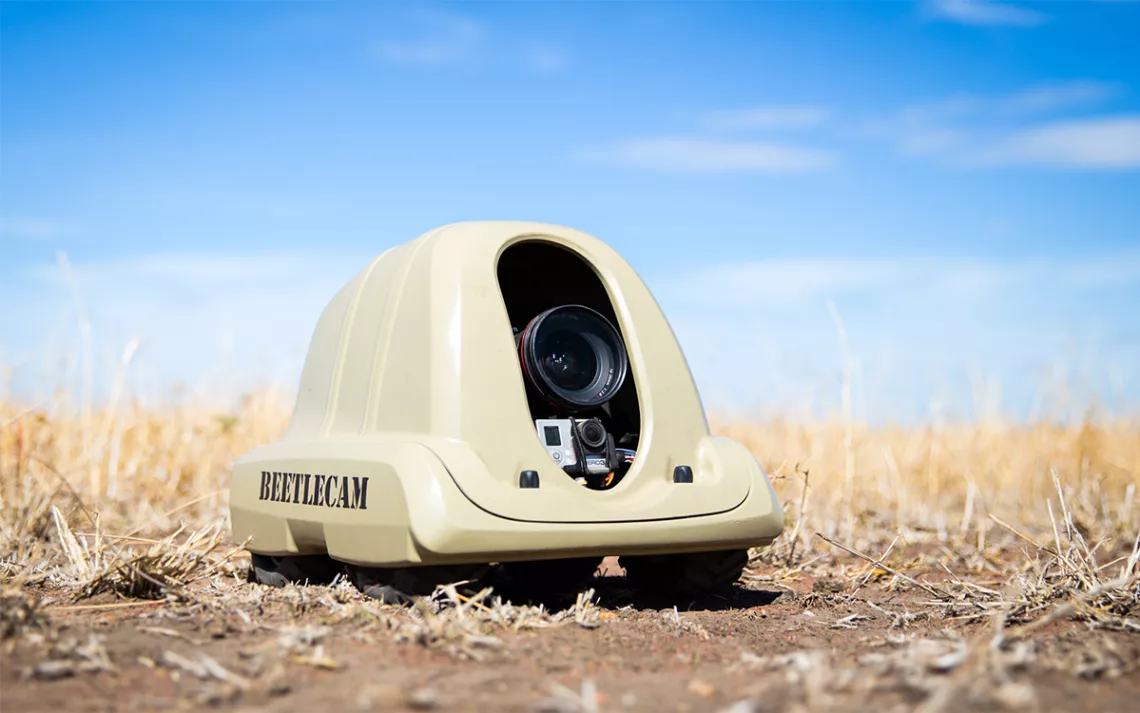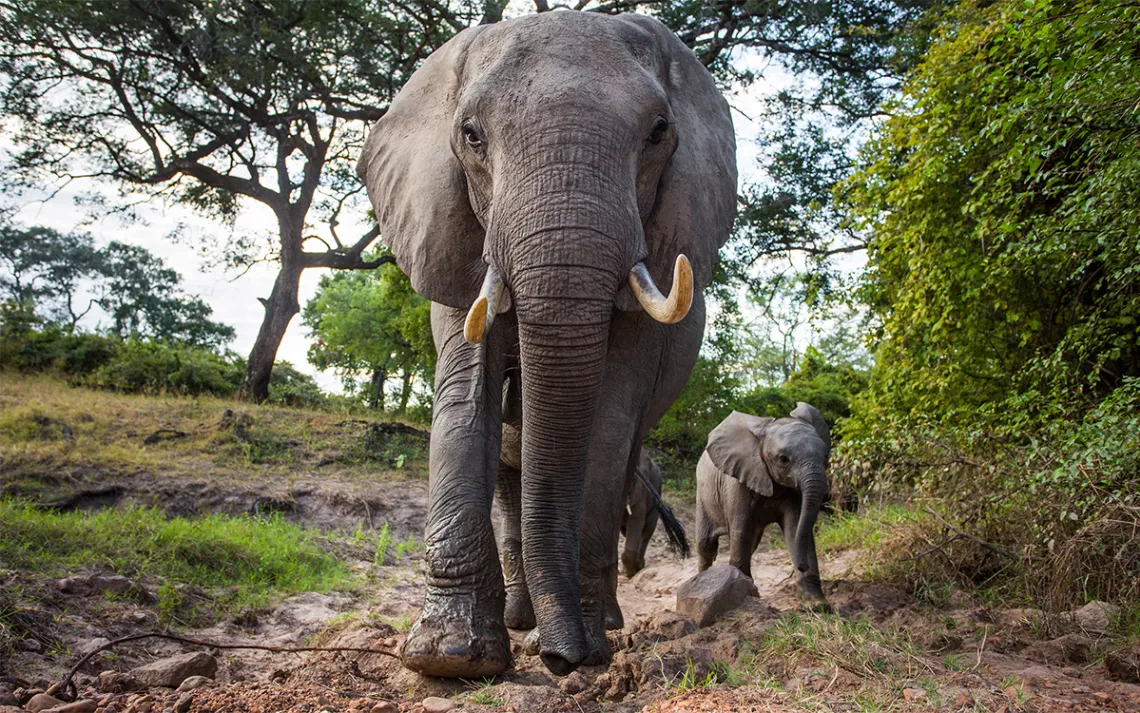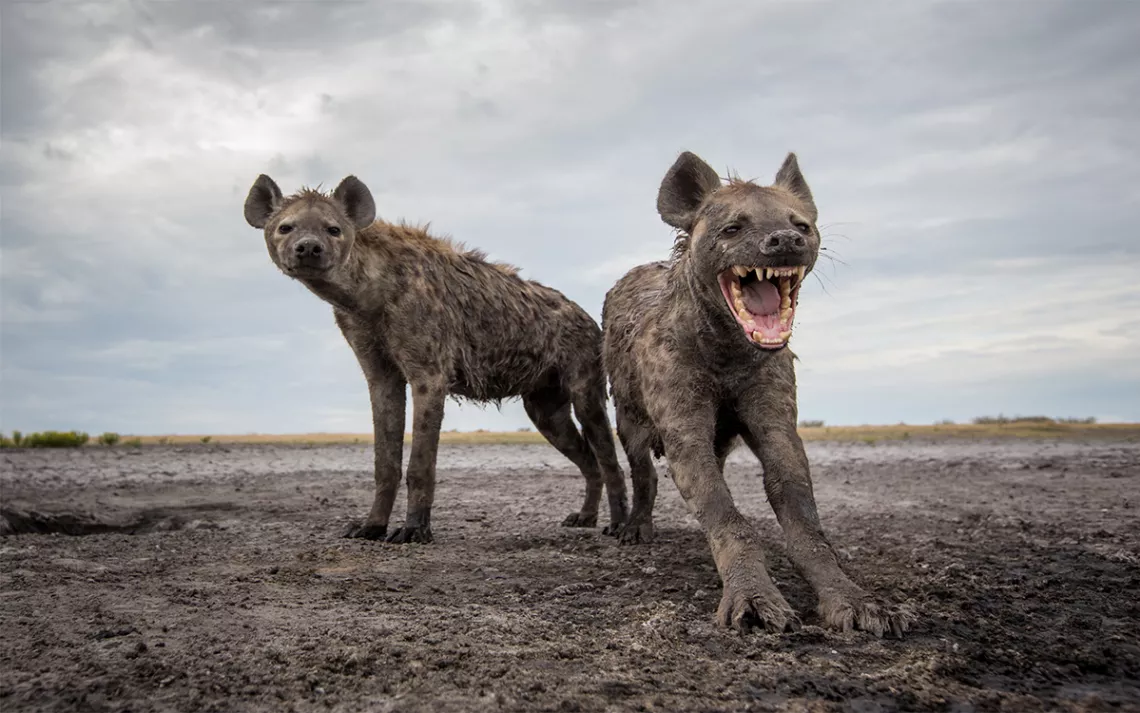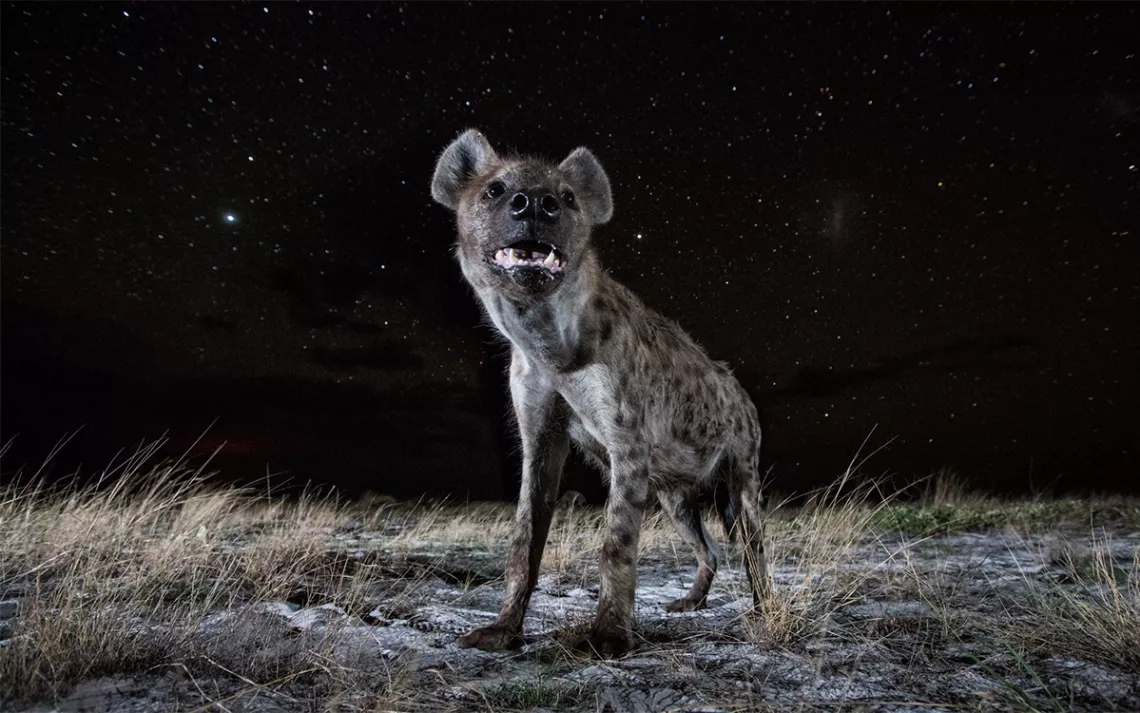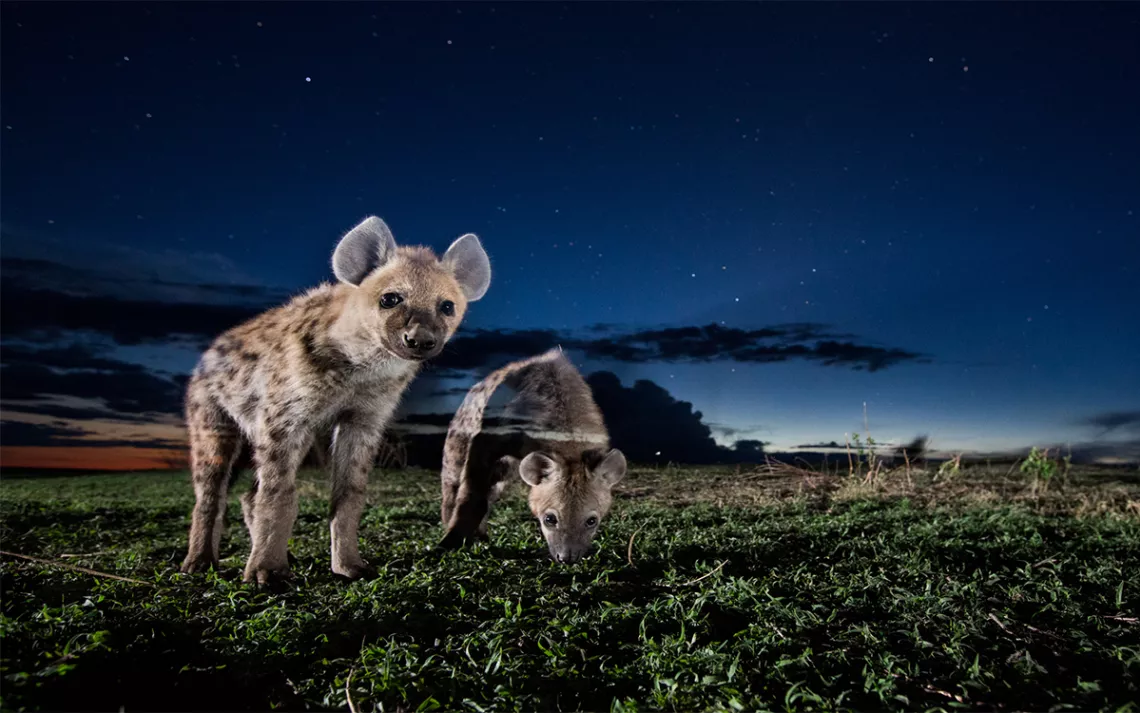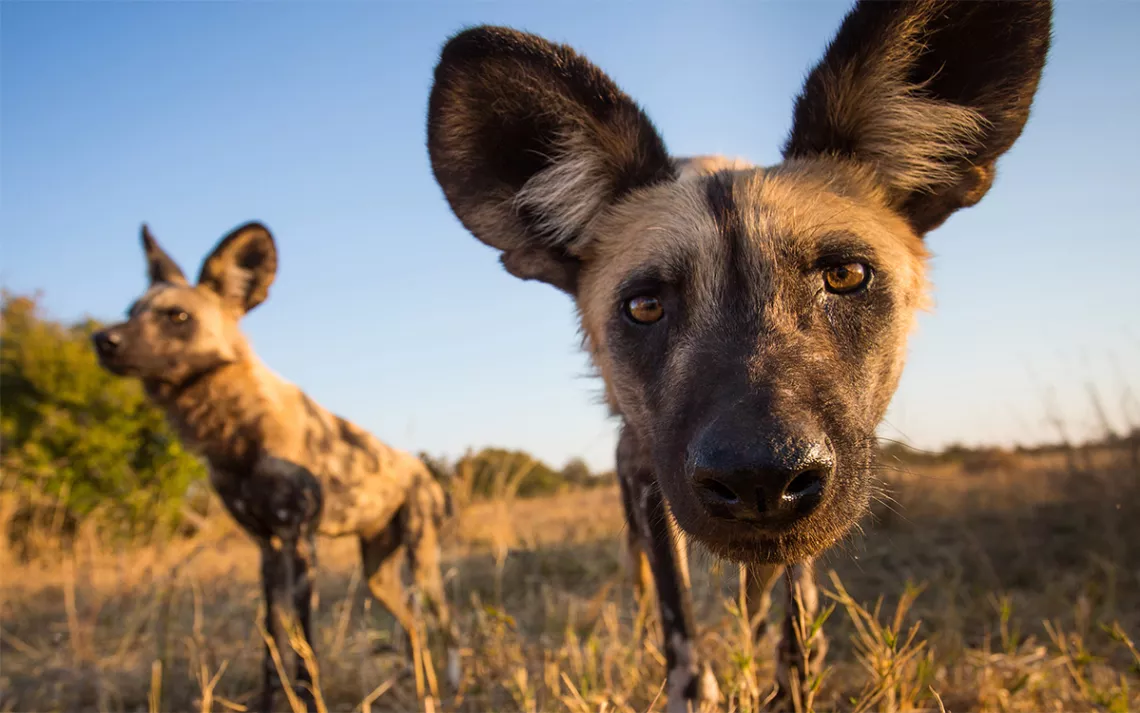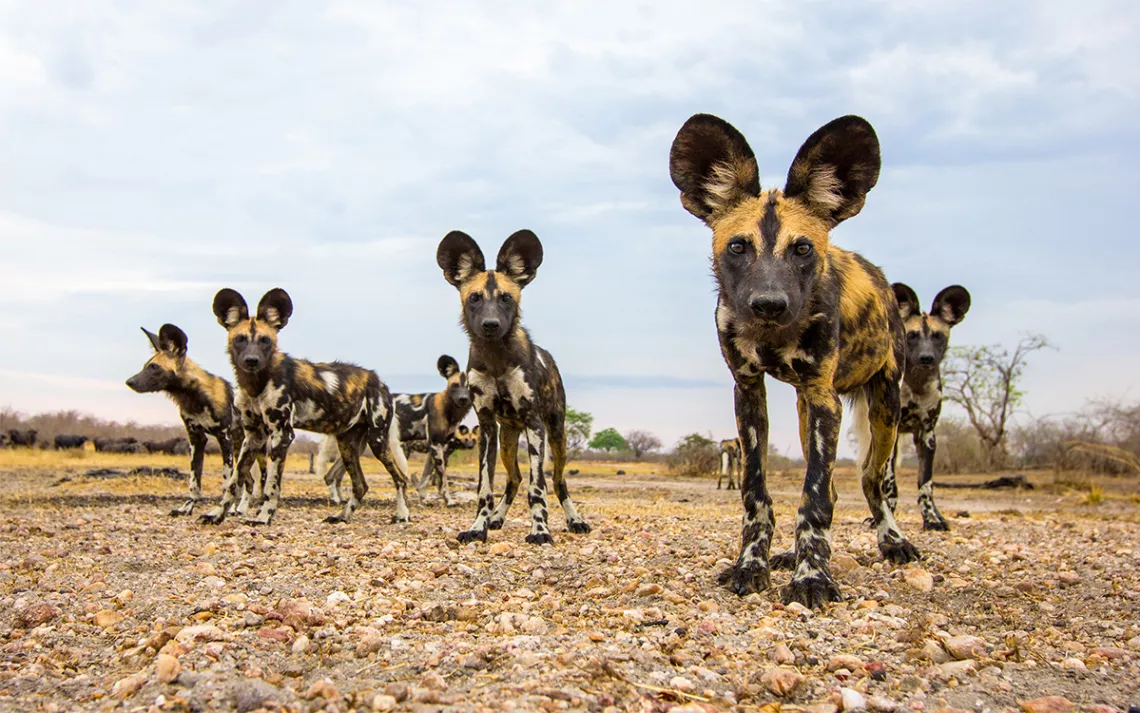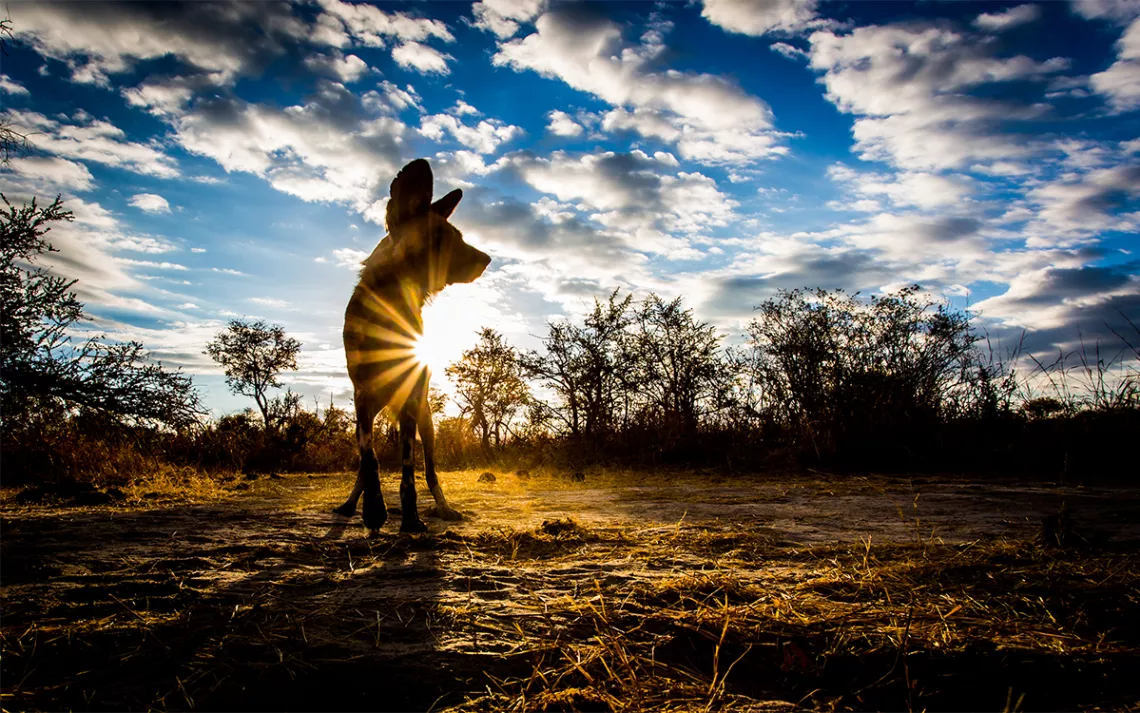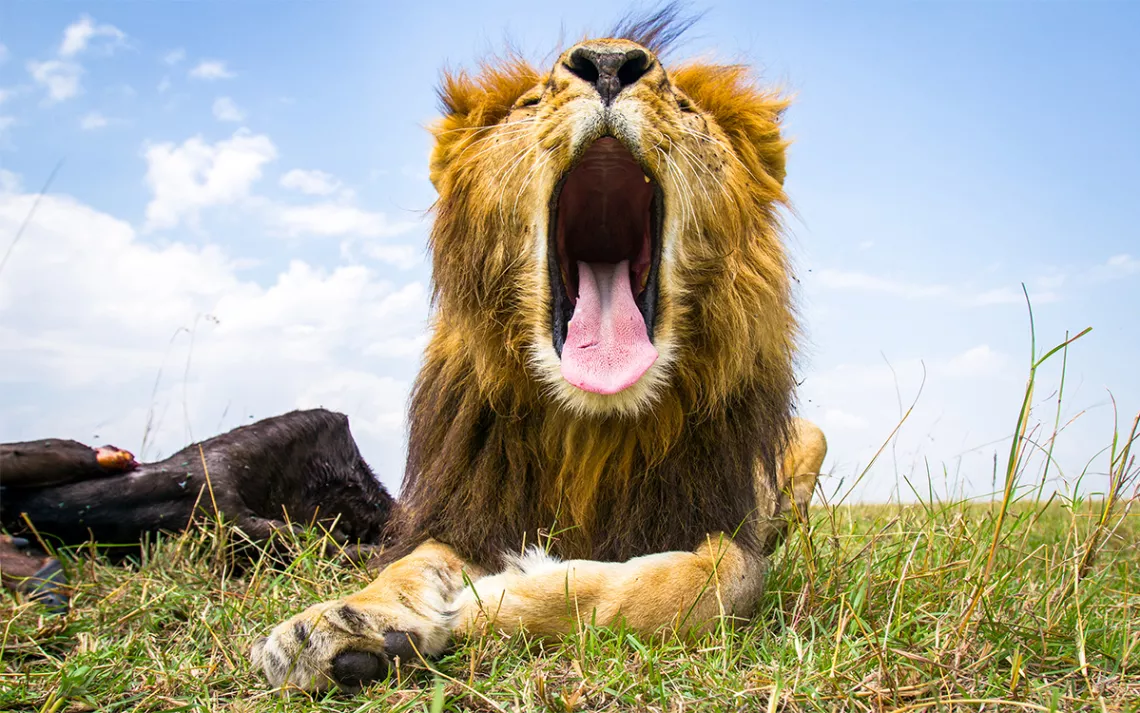Close Encounters of the Carnivorous Kind
Will Burrard-Lucas’s BeetleCam breaks the mold of wildlife photography. | Photos by Will Burrard-Lucas
How do you get up close to a lion feeding on a freshly killed carcass without becoming a wildlife kill yourself? The answer seems obvious: Don’t try it in the first place. But for wildlife photographer Will Burrard-Lucas, getting up close and personal to the wild’s big carnivores was more than just a wild hair. He set out to make it possible.
Burrard-Lucas has been fascinated with the most elusive and impressive animals since he was a kid. He grew up in Tanzania; his earliest memories are of the safaris his family took deep into the bush. Even then, he yearned to go right up to the elephants, lions, and wild dogs he saw on those trips.
In 2009, Burrard-Lucas, by then a professional wildlife photographer, started to seriously consider how he could pull that off. He was familiar with the standard operating procedure for photographing big carnivores: at a safe distance, perched from atop a vehicle, shooting through a long telephoto lens. He wanted to break the mold.
“I was trying to take photos that were different from all the other photos that were out there,” Burrard-Lucas said in an interview. “A lot of wildlife photography is from a similar vantage point: with a narrow field of view, a shallow depth-of-field perspective. When I was experimenting with perspective and angles, I found that getting as close as possible to my subjects and using a wide-angle lens helped me show more of the environment around the animals, rather than this very narrow field of view, shallow perspective that you get from a long lens.”
Burrard-Lucas started crawling up to the subjects on his stomach—not big African animals like lions and elephants, but less threatening species such as penguins and smaller cats, among others. “I was using a wide-angle lens, and the perspective instantly appealed to me. It’s more immersive, more like the world you experience with your own eyes,” he says. “When you see a picture taken with a wide-angle lens, it feels more like you reach into it and touch the subject.”
Eager to replicate the effect with larger, often more dangerous, animals, he used a combination of ingenuity, technology, and old-school trial-and-error before arriving at what seemed like the most obvious solution: a remote-controlled buggy. The BeetleCam was born.
Burrard-Lucas bolted a standard DSLR camera onto a small chassis that could be piloted via remote control, using technology similar in range and capability to aerial drones. He hooked up the camera to a trigger so that it could be operated remotely and took this earliest version of the BeetleCam out into the wild. “Right away I started to get the results I was looking for,” he says. “On the first day, I tried it with elephants and got a very different perspective than what I was used to seeing from my other shots.”
Burrard-Lucas wasn’t the only one excited about the BeetleCam. On its second outing, he went to get some shots of a pride of lions. Ever inquisitive and bold, the cats are not known for their bedside manner. To say that they took notice of the funky-strange object beetling toward them through the dry African dust would be an understatement.
“A young lioness just came straight up to the camera, fastened her jaws around it, and ran off,” Burrard-Lucas says.
He was able to track the animal long enough to retrieve the camera, which was irreparably damaged, and the buggy, which survived largely intact. More important, the camera’s memory card survived, revealing some choice photos of what it looks like to dangle from a lion’s mouth.
Burrard-Lucas’s BeetleCam photographs were instantly popular, and he knew he was onto something. He upgraded the buggy with a hard shell to cover the camera, making it more difficult for the lions to get their teeth into it. Two years later, in 2011, he took BeetleCam out to Kenya with the aim of getting more lion photographs. The Opening Shot of Sierra’s September/October 2017 edition features one of the best of the series.
Just before dawn, Burrard-Lucas came across a mated pair of lions feasting on the carcass of a freshly killed wildebeest. He was able to pilot the BeetleCam until it was just three feet away from the scene. The male was so distracted by the kill that he ignored the buggy as it came right up to him and parked while Burrard-Lucas composed the shot. The resulting photograph is a watercolor of the wild brought to still-life: Every orange tuft of the animal’s mane fills the view, its eyes piercing and focused, its whiskers a filigree blur framing the animal’s face. A swarm of black flies settling over its eyes and maw give the appearance that the animal itself might be dead, but not so—in Africa, there is a species of black fly that has adapted specifically to live on lions. In this case, they’re just hanging out.
In 2012, Burrard-Lucas moved to Zambia and dedicated an entire year to covering the Luangwa Valley, photographing a variety of the more elusive creatures and shier species, including leopards and African wild dogs. The early versions of the BeetleCam in those days didn’t have the live mini-video screen so common on cameras now. Burrard-Lucas, typically stationed about 30 or 40 meters away from the subject, had to judge the perspective and composition by eye before firing the camera. He has since updated the BeetleCam technology so that the latest generation is tailored for remote-camera tilt and the ability to see the picture in real time. More recently, he’s been using the BeetleCam at night to get the animal against starry skylines.
His go-to camera is a 400 mm f/2.8 fast prime lens with a Canon 1DX Mark II for length and reach. “Because the animals are reasonably large, I don’t need anything longer than that,” he says. He likes a fast aperture because he’s often working in low light at the beginning and the end of the day, when animals are active. He uses shallow depths of field to fill out background and foreground to make the images cleaner.
Burrard-Lucas also relies on the knowledge he gleans from the researchers and guides that often accompany him to study the animals. “To get the shots, you have to be able to anticipate and predict as much as possible and be in the right position to increase your chances of getting interesting shots.”
Burrard-Lucas works with several conservation organizations including the World Wildlife Fund and African Parks to provide images they can use in their fundraising and outreach programs or to raise money for the groups. He also works with tourism operators to support the local economy. “To protect a lot of these wild places in Africa, tourism has to support them,” he says. “If these places are going to have any chance of surviving in the long term, local communities have to benefit. The best way to do that is through tourism, which provides jobs and brings money into these communities."
What drives him back into the bush year after year is the same love for wild creatures he had as a boy. In all aspects of his photography, Burrard-Lucas strives to achieve an intimacy between the viewer of the photograph and the animal subject in order to establish, if not an outright bond between the two, at least an inchoate connection—one that might serve as the basis from which a greater respect for the wild among us might spring.
“I’m aiming to inspire people to take note of, and hopefully care about, the natural world,” he says.
 The Magazine of The Sierra Club
The Magazine of The Sierra Club
